Yoga Suhas Kuruba Manjunath
Discern-XR: An Online Classifier for Metaverse Network Traffic
Nov 07, 2024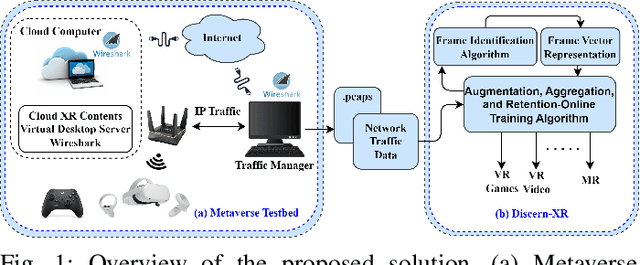
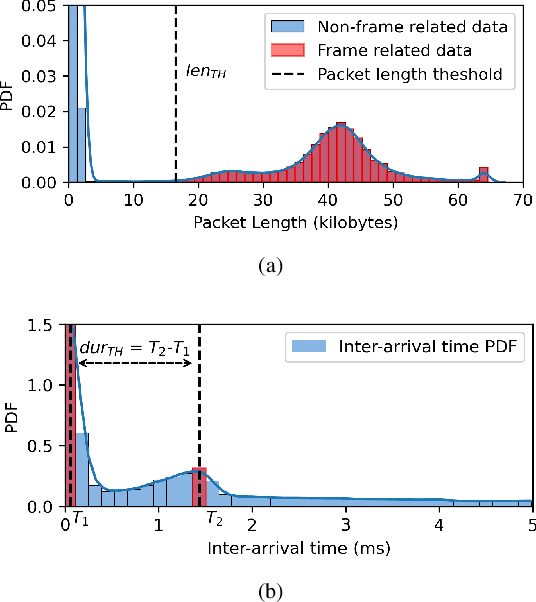
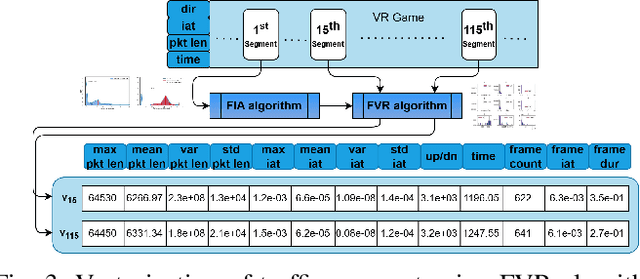
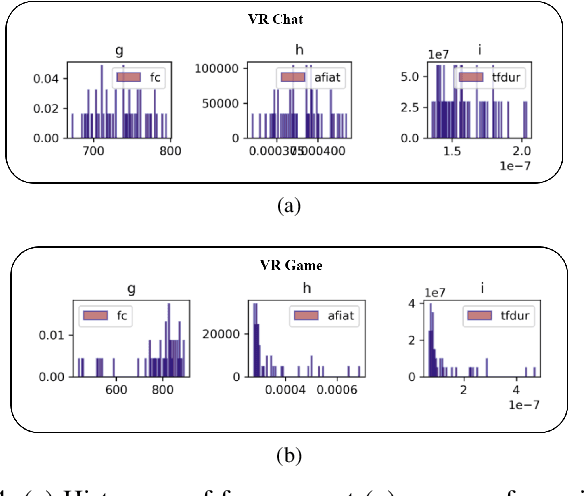
Abstract:In this paper, we design an exclusive Metaverse network traffic classifier, named Discern-XR, to help Internet service providers (ISP) and router manufacturers enhance the quality of Metaverse services. Leveraging segmented learning, the Frame Vector Representation (FVR) algorithm and Frame Identification Algorithm (FIA) are proposed to extract critical frame-related statistics from raw network data having only four application-level features. A novel Augmentation, Aggregation, and Retention Online Training (A2R-OT) algorithm is proposed to find an accurate classification model through online training methodology. In addition, we contribute to the real-world Metaverse dataset comprising virtual reality (VR) games, VR video, VR chat, augmented reality (AR), and mixed reality (MR) traffic, providing a comprehensive benchmark. Discern-XR outperforms state-of-the-art classifiers by 7% while improving training efficiency and reducing false-negative rates. Our work advances Metaverse network traffic classification by standing as the state-of-the-art solution.
ResLearn: Transformer-based Residual Learning for Metaverse Network Traffic Prediction
Nov 07, 2024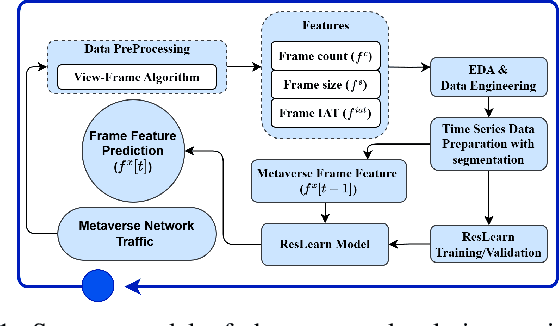
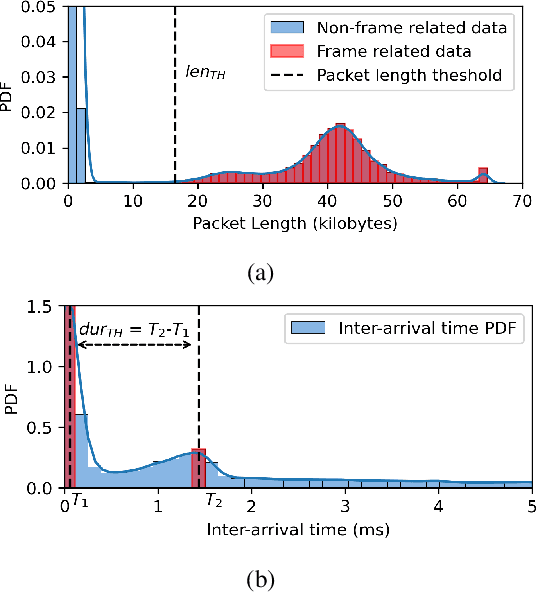
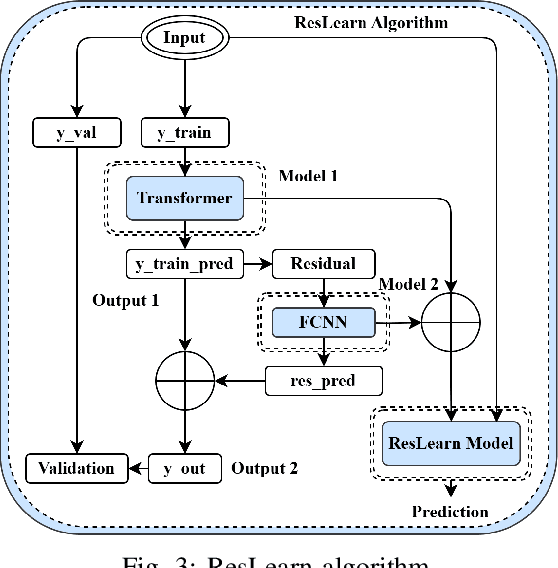
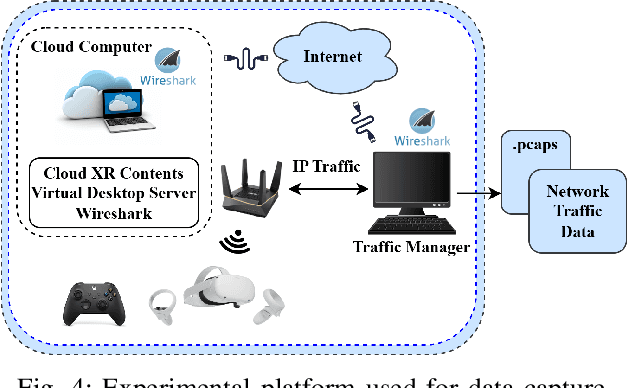
Abstract:Our work proposes a comprehensive solution for predicting Metaverse network traffic, addressing the growing demand for intelligent resource management in eXtended Reality (XR) services. We first introduce a state-of-the-art testbed capturing a real-world dataset of virtual reality (VR), augmented reality (AR), and mixed reality (MR) traffic, made openly available for further research. To enhance prediction accuracy, we then propose a novel view-frame (VF) algorithm that accurately identifies video frames from traffic while ensuring privacy compliance, and we develop a Transformer-based progressive error-learning algorithm, referred to as ResLearn for Metaverse traffic prediction. ResLearn significantly improves time-series predictions by using fully connected neural networks to reduce errors, particularly during peak traffic, outperforming prior work by 99%. Our contributions offer Internet service providers (ISPs) robust tools for real-time network management to satisfy Quality of Service (QoS) and enhance user experience in the Metaverse.
Time-Distributed Feature Learning for Internet of Things Network Traffic Classification
Sep 08, 2024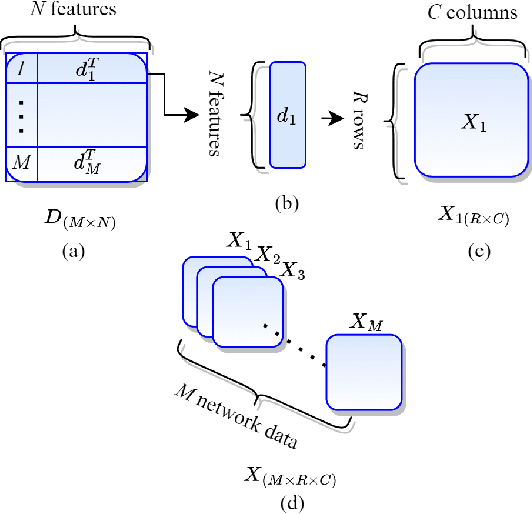
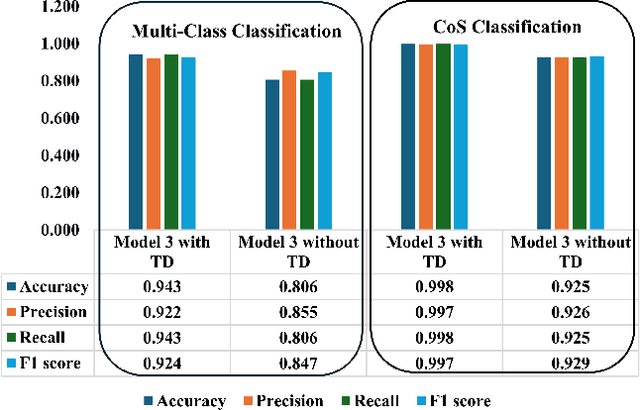
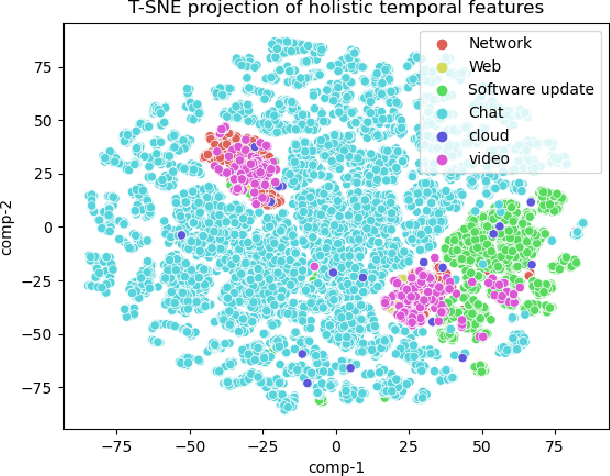
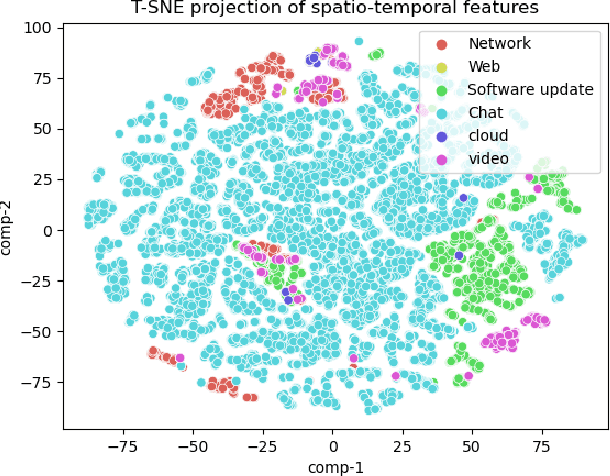
Abstract:Deep learning-based network traffic classification (NTC) techniques, including conventional and class-of-service (CoS) classifiers, are a popular tool that aids in the quality of service (QoS) and radio resource management for the Internet of Things (IoT) network. Holistic temporal features consist of inter-, intra-, and pseudo-temporal features within packets, between packets, and among flows, providing the maximum information on network services without depending on defined classes in a problem. Conventional spatio-temporal features in the current solutions extract only space and time information between packets and flows, ignoring the information within packets and flow for IoT traffic. Therefore, we propose a new, efficient, holistic feature extraction method for deep-learning-based NTC using time-distributed feature learning to maximize the accuracy of the NTC. We apply a time-distributed wrapper on deep-learning layers to help extract pseudo-temporal features and spatio-temporal features. Pseudo-temporal features are mathematically complex to explain since, in deep learning, a black box extracts them. However, the features are temporal because of the time-distributed wrapper; therefore, we call them pseudo-temporal features. Since our method is efficient in learning holistic-temporal features, we can extend our method to both conventional and CoS NTC. Our solution proves that pseudo-temporal and spatial-temporal features can significantly improve the robustness and performance of any NTC. We analyze the solution theoretically and experimentally on different real-world datasets. The experimental results show that the holistic-temporal time-distributed feature learning method, on average, is 13.5% more accurate than the state-of-the-art conventional and CoS classifiers.
Segmented Learning for Class-of-Service Network Traffic Classification
Aug 03, 2022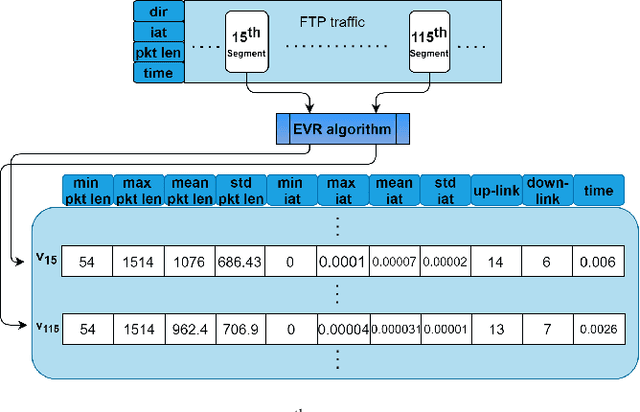
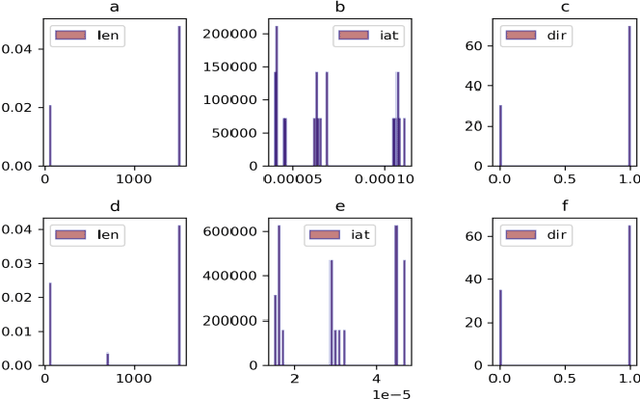
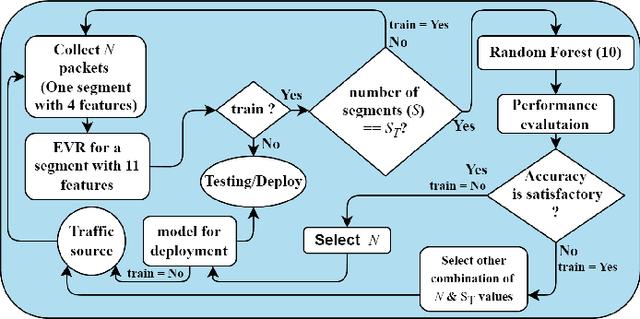
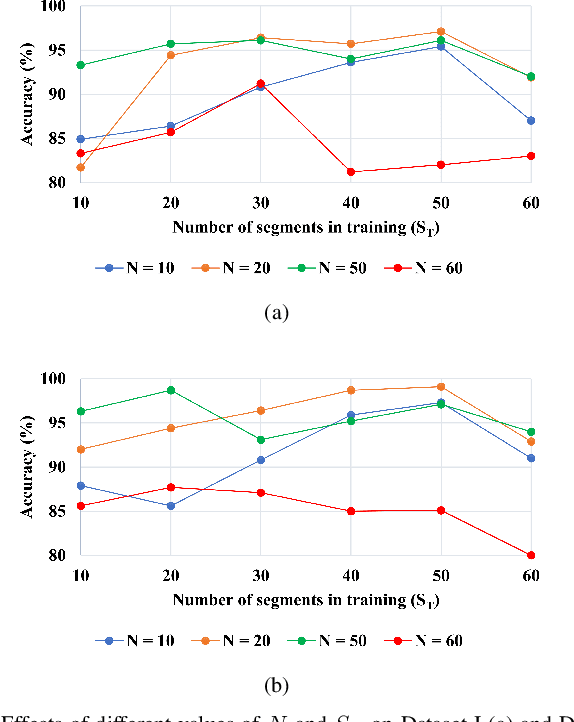
Abstract:Class-of-service (CoS) network traffic classification (NTC) classifies a group of similar traffic applications. The CoS classification is advantageous in resource scheduling for Internet service providers and avoids the necessity of remodelling. Our goal is to find a robust, lightweight, and fast-converging CoS classifier that uses fewer data in modelling and does not require specialized tools in feature extraction. The commonality of statistical features among the network flow segments motivates us to propose novel segmented learning that includes essential vector representation and a simple-segment method of classification. We represent the segmented traffic in the vector form using the EVR. Then, the segmented traffic is modelled for classification using random forest. Our solution's success relies on finding the optimal segment size and a minimum number of segments required in modelling. The solution is validated on multiple datasets for various CoS services, including virtual reality (VR). Significant findings of the research work are i) Synchronous services that require acknowledgment and request to continue communication are classified with 99% accuracy, ii) Initial 1,000 packets in any session are good enough to model a CoS traffic for promising results, and we therefore can quickly deploy a CoS classifier, and iii) Test results remain consistent even when trained on one dataset and tested on a different dataset. In summary, our solution is the first to propose segmentation learning NTC that uses fewer features to classify most CoS traffic with an accuracy of 99%. The implementation of our solution is available on GitHub.
Time-Distributed Feature Learning in Network Traffic Classification for Internet of Things
Sep 29, 2021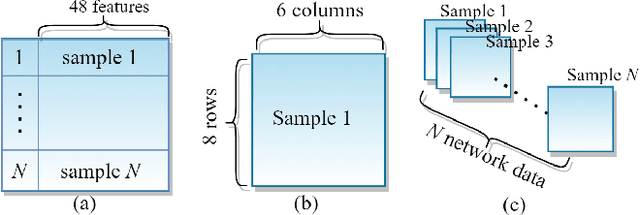
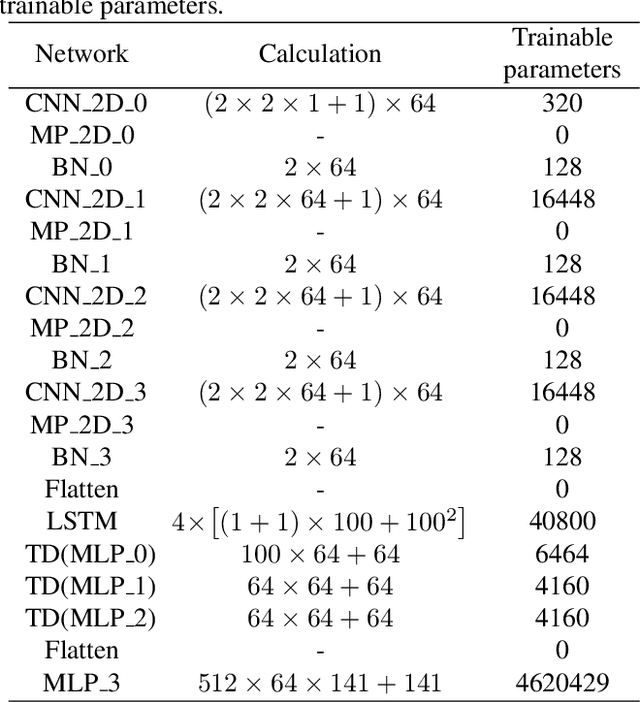


Abstract:The plethora of Internet of Things (IoT) devices leads to explosive network traffic. The network traffic classification (NTC) is an essential tool to explore behaviours of network flows, and NTC is required for Internet service providers (ISPs) to manage the performance of the IoT network. We propose a novel network data representation, treating the traffic data as a series of images. Thus, the network data is realized as a video stream to employ time-distributed (TD) feature learning. The intra-temporal information within the network statistical data is learned using convolutional neural networks (CNN) and long short-term memory (LSTM), and the inter pseudo-temporal feature among the flows is learned by TD multi-layer perceptron (MLP). We conduct experiments using a large data-set with more number of classes. The experimental result shows that the TD feature learning elevates the network classification performance by 10%.
Virtual Reality Gaming on the Cloud: A Reality Check
Sep 21, 2021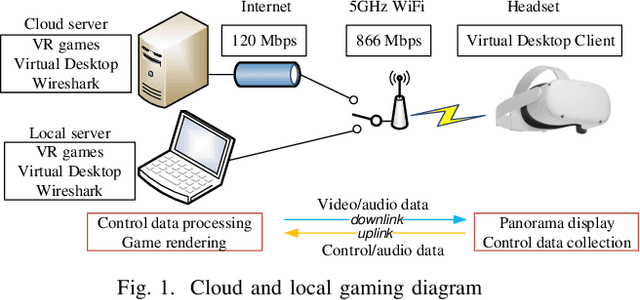
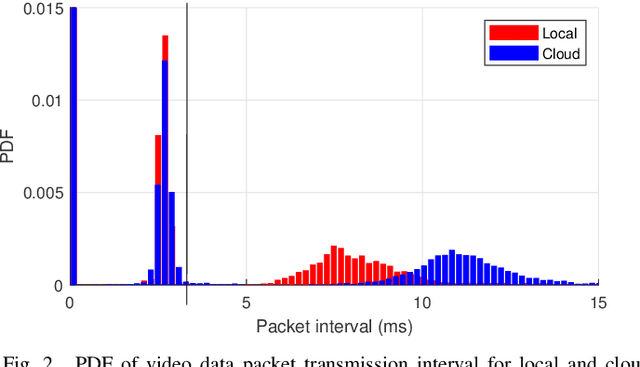
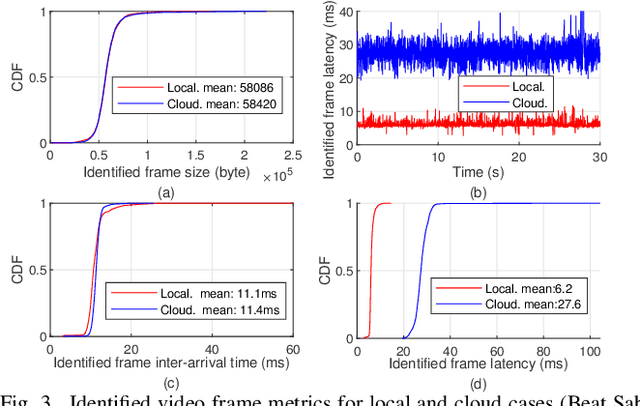
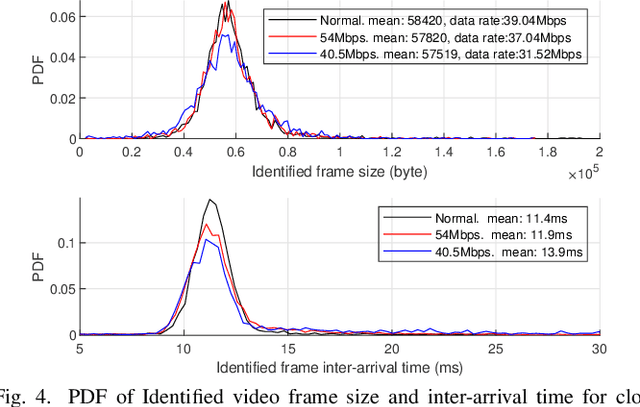
Abstract:Cloud virtual reality (VR) gaming traffic characteristics such as frame size, inter-arrival time, and latency need to be carefully studied as a first step toward scalable VR cloud service provisioning. To this end, in this paper we analyze the behavior of VR gaming traffic and Quality of Service (QoS) when VR rendering is conducted remotely in the cloud. We first build a VR testbed utilizing a cloud server, a commercial VR headset, and an off-the-shelf WiFi router. Using this testbed, we collect and process cloud VR gaming traffic data from different games under a number of network conditions and fixed and adaptive video encoding schemes. To analyze the application-level characteristics such as video frame size, frame inter-arrival time, frame loss and frame latency, we develop an interval threshold based identification method for video frames. Based on the frame identification results, we present two statistical models that capture the behaviour of the VR gaming video traffic. The models can be used by researchers and practitioners to generate VR traffic models for simulations and experiments - and are paramount in designing advanced radio resource management (RRM) and network optimization for cloud VR gaming services. To the best of the authors' knowledge, this is the first measurement study and analysis conducted using a commercial cloud VR gaming platform, and under both fixed and adaptive bitrate streaming. We make our VR traffic data-sets publicly available for further research by the community.
 Add to Chrome
Add to Chrome Add to Firefox
Add to Firefox Add to Edge
Add to Edge